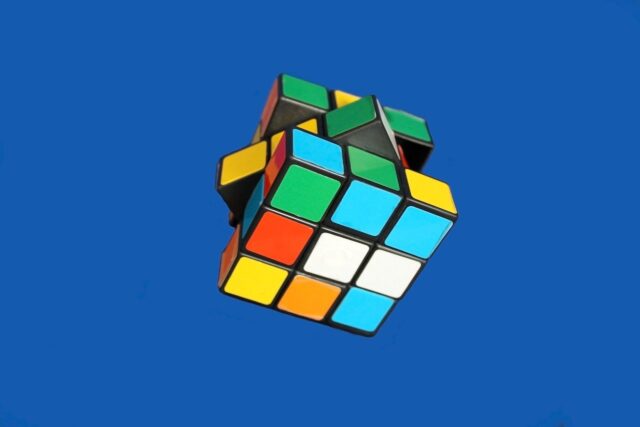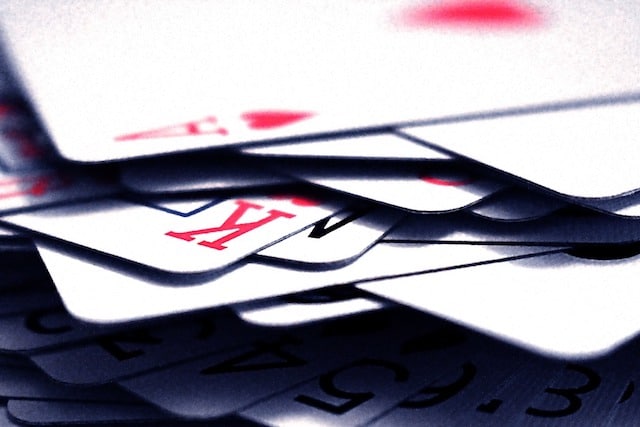10 Learnable Mental Powers That Boost Your Life
We’ve all come across someone who seems to have a superhuman memory, solves math problems in seconds, or just thinks ten steps ahead. It’s easy to chalk it up to genius-level IQ or assume they were born that way. But here’s the twist—it’s not always some rare talent or savant syndrome at play. In fact, many of these so-called “mental superpowers” are skills that anyone can develop.
Yes, even you.
The truth is, your brain is remarkably adaptable. With the right techniques and a little consistent effort, you can learn to memorize faster, calculate quicker, and even boost your focus dramatically. It’s not magic, and it’s not just for gifted people—it’s training. Just like you can build muscle at the gym, you can build your brain’s capacity with the right mental workouts.
From memory palaces used by champions of recall, to chunking techniques for speed math, there are countless tools out there—many of which are rooted in centuries-old practices. And thanks to modern neuroscience, we now understand that these aren’t just tricks—they actually reshape how your brain processes information.
10. Think Solving a Rubik’s Cube Is Too Hard? Think Again—It’s Easier Than You Think

The Rubik’s Cube has earned a bit of a reputation—part puzzle, part art piece, and for many, a frustrating toy that ends up back on the shelf after solving just one side. Most of us have been there: you line up the colors on one face, feel a small rush of victory… and then promptly destroy it trying to fix the rest. At that point, it feels like only geniuses or math wizards have the brainpower to finish the job.
But here’s the mind-blowing part—you don’t need to be a genius. Solving a Rubik’s Cube is mostly about patterns, not brainpower. If you can solve one side, you’re already halfway there. The rest comes down to learning a few simple movement algorithms—specific sequences of twists that manipulate certain pieces while leaving the rest untouched.
This isn’t just a brain game; it’s a party trick, a concentration builder, and a surprisingly fun skill to show off. And if you think speed-solving is another level entirely, think again. A 9-year-old named Yihang Wang from China has repeatedly solved it in under five seconds. That’s not wizardry—it’s muscle memory, focus, and lots of practice.
9. Unleashing Your Memory Potential: It’s Easier Than You Think

Have you ever gazed at someone with an extraordinary memory and wondered if they were just blessed with some unique genetic gift? Many of us tend to believe that talent is an inborn trait, something you either have or don’t. But when it comes to memory, this perception is far from the truth.
Most researchers dismiss the idea of a true photographic or eidetic memory as a myth. However, this doesn’t mean you can’t develop a remarkable memory. The secret lies in properly training and disciplining your mind.
Let’s start by understanding the fundamental nature of memory. Memory isn’t like a video recorder that stores everything perfectly. Instead, it has certain “addresses” in your brain that are triggered based on the context in which you learned something. This can make retrieval a challenge. For instance, trying to recall a piece of information might be difficult if you can’t remember the surrounding circumstances at the time of learning. But here’s the good news: you can take control of your memory by using more logical triggers. By consciously associating information with meaningful cues, you can significantly improve your ability to recall it.
Now, let’s dive into a powerful technique called chunking. Our short-term memory has a limited capacity, typically holding around nine chunks of information at a time. But what if we could expand this limit? Chunking allows us to do just that. Instead of trying to remember individual items, we group them into categories or chunks. For example, if you need to remember a long string of numbers, you can break them down into smaller, more manageable groups. This not only makes it easier to remember but also expands your overall working memory capacity.
Begin by incorporating these simple techniques into your daily routine. Whether it’s using mnemonic devices to associate information with vivid images or grouping related items together using chunking, every little bit of practice counts.
Remember, a great memory isn’t some unattainable dream. With dedication and the right techniques, you can unlock your full memory potential and achieve incredible feats of recollection. So, why wait? Start your memory-enhancing journey now and discover the amazing possibilities that await!
8. Counting Cards: Surprisingly Simple and Surprisingly Profitable

When you think of card counting, your mind probably flashes to Hollywood thrillers like The Hangover, where a lone genius channels complex math formulas to beat the casino. Dramatic music swells, equations float in the air, and suddenly—boom—he’s a millionaire. But here’s the real kicker: you don’t need to be a math whiz to count cards. Not even close.
In reality, the method is far more grounded than movies let on. There’s no need for calculus or neural networks. Basic arithmetic is all it takes—yes, the kind you learned in elementary school. What truly matters is focus, a bit of patience, and a willingness to practice. Like learning to juggle or ride a bike, it starts off awkward but quickly becomes second nature with repetition. And if you’re into memory tricks, that’s a bonus. Being able to remember sequences under pressure can give you a clear edge—but again, it’s all within human reach.
Now, let’s address the elephant in the room: Is card counting illegal? The short answer? No, not if you’re doing it solo. The long answer: Casinos don’t love it, and they absolutely can (and will) ask you to leave if they suspect you’re counting. But unless you’re using devices, colluding with others, or doing anything shady, there’s no law against using your brain. What happened in The Hangover? That crossed into conspiracy territory, which is a big legal no-no.
But here’s what makes this skill so fascinating—and worthy of being shared on a site dedicated to the unexpected and the clever. Card counting transforms a seemingly impossible game of chance into something closer to strategy. It’s like finding out there’s a hidden cheat code in a game that everyone thought was random. Most people have no idea that this technique is accessible to regular folks—not just savants or MIT grads.
If this piqued your curiosity, you might want to dive deeper into the world of blackjack, or explore the logic behind probability theory. Just know this: the line between chance and choice is thinner than you think. And sometimes, what feels like magic is just math in disguise.
7. Decoding Body Language: Unleashing an Extra Sense in Communication

In our daily lives, we humans pick up a fair bit of knowledge about human body language intuitively. After all, we’re constantly surrounded by fellow humans, and our interactions with them naturally lead to some level of understanding. However, the science behind body language holds a wealth of information that often goes unnoticed. By actively delving into this science and learning more, it can feel as if we’re endowing ourselves with an entirely new sense. This newly acquired understanding isn’t just limited to our own species; it extends to our animal companions too.
When it comes to our furry friends, dogs are often the center of attention when it comes to body language study. Their body language is relatively well-documented, and many of us are familiar with common cues. But what about cats? Cats have long been somewhat enigmatic creatures, and until recently, there hasn’t been as much research focused on their body language.
Nevertheless, the knowledge we do have about cats can be quite revealing. One of the most crucial aspects to observe in a cat’s body language is their tail movements. The tail can serve as a barometer of their mood. For instance, when a cat holds its tail up, it’s often a sign of interest and openness. They’re likely approachable and in a positive frame of mind. On the other hand, a thrashing tail is a major red flag. It indicates that the cat is extremely angry and frustrated, and it might be best to give them some space.
Moving on to humans, there’s an interesting body language quirk related to eye movements that many people are unaware of. By paying attention to the direction in which a person’s eyes are moving, we can sometimes gain insights into whether they’re being truthful or not. Here’s the general pattern: when people are recalling information, they tend to look to the left. However, when they’re thinking about something new or creating a story, they’re more likely to look right and upward. But if you catch someone looking right and downward, it could be a sign that they’re doubting their own words. This knowledge can be invaluable in various situations, from personal relationships to professional negotiations.
Learning to understand body language, whether it’s that of humans or animals, equips us with a powerful tool for better communication. It allows us to bridge gaps, build stronger connections, and navigate social situations with greater ease.
6. Classical Logic Might Be the Mental Superpower You’ve Been Overlooking

We all like to believe we’re thinking clearly most of the time. After all, you weigh pros and cons, make decisions based on evidence, maybe even second-guess yourself now and then. Sounds logical, right? But what if I told you there’s a simple, structured way to radically level up your thinking, and it’s been hiding in plain sight for centuries?
Enter Classical Logic—a tool that seems dusty and academic at first glance, but is shockingly powerful when brought into everyday life. Don’t worry, this isn’t about memorizing Latin phrases or solving chalkboard equations. At its heart, classical logic is about boiling down thoughts into clear, yes-or-no statements. Think of it as mental decluttering. For example: “If I feel full, I’ve had enough to eat. If I eat more, I’ve gone too far.” Sounds obvious, but that kind of crisp, cause-effect thinking is the foundation of smarter choices.
One reason people brush classical logic off is because it seems too simple—almost laughably reductive. But that’s the beauty of it. Stripping away emotional noise and irrelevant details lets you see the core of any issue. And once you start applying it regularly? You’ll start noticing patterns others miss. You’ll catch contradictions in conversations, sniff out half-truths in ads or media, and navigate debates with a cool, collected mindset.
Even better, learning classical logic doesn’t take years of study. A few solid examples and a little practice can rewire how you think. You might not become a logician overnight, but you will start thinking like one—and that can be a game-changer. Imagine being able to separate fact from fiction, even when your emotions are screaming the opposite. That’s the kind of skill that makes you resistant to manipulation, whether it’s from sensational news headlines or subtle peer pressure.
If this idea excites you, you’re not alone. More and more people are turning to logic as a form of mental self-defense in an age of misinformation. Want to get started? Dive into some basics like truth tables or syllogisms, and try applying them to daily scenarios. The results might surprise you.
5. Lip Reading Is a Surprisingly Handy Skill—But It’s Easier to Misread Than You Think

Most of us never give lip reading a second thought. It sounds like something only relevant to the deaf or hard of hearing community—a niche skill that helps people fill in the gaps when the ears can’t keep up. But here’s the twist: knowing how to read lips can be unexpectedly useful in everyday life, even if your hearing is perfectly fine.
Think about those noisy bars or echoey meeting rooms where catching every word feels like an Olympic event. Or imagine trying to understand someone from across the room, without asking them to shout or repeat themselves. In these moments, lip reading isn’t just a cool party trick—it becomes a real-world advantage.
But here’s where things get interesting—and a little tricky. Lip reading isn’t foolproof. In fact, it can be wildly misleading if you don’t know what you’re doing. Many words look identical on the lips—like “bat” and “mat” or “vote” and “boat.” Without the right context, you could easily misunderstand what someone’s really saying. Worse, if you act on what you think you saw, you might find yourself in a truly awkward (or even risky) situation.
The key is to treat lip reading as a support tool, not a primary method of communication. It works best when paired with sound, facial expressions, and other body language cues. If you try to rely on it blindly, you’ll quickly realize how often it can deceive the eye.
Still, for those willing to put in the practice, learning the basics of lip reading can sharpen your awareness, improve focus, and even boost your empathy. You start noticing subtle changes in expression and micro-movements you once overlooked. It’s a bit like learning a new language—the language of the face.
4. Why Learning the Basics of Various Subjects Is a Hidden Gem

Let’s be honest—your early college years can sometimes feel like a maze. You’re knee-deep in general education courses that seem worlds away from your chosen major. It’s easy to grumble, “Why am I wasting my time on this?” But before you write off these classes as a chore, let’s uncover the hidden benefits of diving into a variety of subjects.
At first glance, it might feel like colleges are just stretching your tuition dollars. Some even speculate it’s a sneaky way to keep you enrolled longer. But here’s the truth: there’s real value in exploring beyond your comfort zone. Sure, specializing in your field is crucial, but true mastery doesn’t come from isolation. Think of it like cooking—if you only know how to make one dish, you’re missing out on the synergy that comes from understanding flavors, textures, and techniques from around the world.
Each subject you study is a piece of a larger puzzle. Interconnected concepts from different fields can spark unexpected insights. For instance, a basic understanding of psychology might enhance your ability to connect with clients in a business setting. Or, a grasp of environmental science could inspire innovative solutions in your engineering projects. These seemingly unrelated courses are actually building a rich tapestry of knowledge that will set you apart.
Moreover, being a well-rounded individual is a powerful asset. Imagine walking into a meeting and confidently discussing a topic outside your expertise. It’s not just about impressing others; it’s about expanding your horizons and being able to think critically from multiple perspectives. This versatility can open doors you never expected, making you a valuable asset in today’s job market.
Employers are increasingly looking for candidates who can adapt and innovate. They want individuals who can bridge the gap between different fields. By studying a variety of subjects, you’re not just accumulating knowledge; you’re developing the critical thinking skills needed to tackle complex challenges. This diverse skill set is like a Swiss Army knife—it equips you to handle whatever comes your way.
3. You Don’t Have To Be Blind—or Daredevil—to Learn Echolocation

When people hear the word echolocation, their minds often jump to bats, dolphins, or maybe the Marvel superhero Daredevil, whose radar-like senses help him “see” the world despite being blind. Sounds like pure fiction, right? Well, here’s something that might bend your brain a bit: echolocation is real, and even fully sighted people can learn it.
Now, you might be wondering: Why would I need echolocation if I already have working eyes? It’s a fair question—but vision isn’t always enough. Imagine navigating a dark room during a power outage, biking through fog, or simply trying to sense someone approaching from behind. Echolocation offers a backup system, a different way to map your surroundings when your eyes fall short.
At its core, echolocation is about using sound—clicks, taps, snaps—and interpreting the way it bounces off objects around you. Your brain takes those echoes and pieces together a mental “sonar map”. It sounds almost superhuman, but people can actually train this skill. And here’s the twist: studies suggest that sighted individuals sometimes learn echolocation faster than blind individuals. Why? Because they often have more experience tying auditory cues to visual references.
Let’s be clear—you won’t be dodging bullets like Daredevil. But with practice, you can learn to detect walls, doorways, parked cars, and even tree branches just by listening to the echo of your own sounds. There’s already a growing community around human echolocation training, and it’s gaining popularity not just among the blind, but adventurers, athletes, and curious minds looking to unlock hidden senses.
It’s not magic. It’s just neuroplasticity—your brain’s amazing ability to adapt and evolve. And if you’re into quirky, useful skills that push your perception of reality, echolocation is definitely one to try.
2. Don’t Just See or Hear—Train Yourself to Truly Observe

We’ve all heard the phrase “seeing is believing,” but the truth is, most people see without really observing. The legendary detective Sherlock Holmes said it best in his famous line to Dr. Watson: “You see, but you do not observe.” This wasn’t just clever wordplay—it was the cornerstone of Holmes’ ability to notice what others miss.
But here’s the real twist: you don’t need to be a detective to benefit from this skill.
In fact, actively learning how to observe, not just see or hear, can dramatically improve how you understand the world around you. Psychologists call this common mental shortcut “inattentional blindness”—a kind of everyday brain fog where your mind tunes out things you’ve seen a hundred times before. It’s why you might walk right past your keys on the table, or fail to notice that a traffic sign has changed.
The human brain likes routines. It fills in blanks to save energy, and that’s useful—until it’s not. Small unnoticed changes in your environment can lead to mistakes, missed opportunities, or even danger. But when you train yourself to observe—really observe—you start catching those subtle differences.
Want a real-world example? Think about your commute. Try to actively scan your surroundings one day: the signs, people’s expressions, store windows, even the sounds. You’ll be surprised by how much you’ve been ignoring. Over time, this mental habit strengthens your memory, sharpens your intuition, and helps you read social cues like mood shifts in your coworkers or loved ones.
And no, this isn’t about becoming paranoid or hyper-alert 24/7. It’s about being mindfully aware, a rare skill in today’s overstimulated world.
To build this muscle, start small. Next time you enter a room, ask yourself: What color were the walls? How many chairs were there? Was there a smell? A sound? Do this consistently and your brain will rewire itself to notice more.
It’s not just useful. It’s a kind of everyday superpower. Observation is the quiet skill that makes you smarter, safer, and more socially aware—without anyone ever realizing you’ve leveled up.
1. You Can Become A Human Calculator By Mastering Simple Tricks

Let’s get one thing straight: while learning to become a human calculator might sound daunting, it’s not as impossible as it seems. In fact, it’s the most impressive skill on this list, but don’t worry—it doesn’t require you to be a math prodigy. If you’ve ever seen someone at a county fair solving complex multiplication problems faster than you can type them into your calculator, you might have assumed they were a real-life Will Hunting. Spoiler alert: they’re not. They’re just using math tricks that anyone can learn with a bit of practice.
The Secret? Breaking It Down
The first step to mastering this skill is mastering the basics of arithmetic. It’s all about simplifying problems. For example, you can round numbers up or down to make calculations easier, or break them into smaller chunks. Think of it like solving a puzzle: the more familiar you are with the pieces, the easier it becomes to put them together. Once you understand these principles, the rest is just about memorization and application.
Memorize Square Roots and Learn a Simple Formula
Here’s where it gets interesting. If you memorize some key square roots, you’ll already have a head start. But the real magic lies in a simple formula : (A2−B2)=(A+B)∗(A−B)
Yes, that’s it. By plugging in the right numbers and applying this formula, you can tackle advanced multiplication problems with ease. It’s not about being a genius—it’s about using the right tools. Once you combine this formula with your knowledge of square roots, you’ll be solving problems faster than you ever thought possible.
Practice Makes Perfect
Sure, it takes practice to get comfortable with these tricks, but that’s the fun part. Start small—try solving simple problems using these methods, and gradually work your way up to more complex ones. Before you know it, you’ll be impressing your friends and colleagues with your newfound mathematical prowess.

























